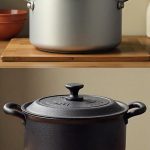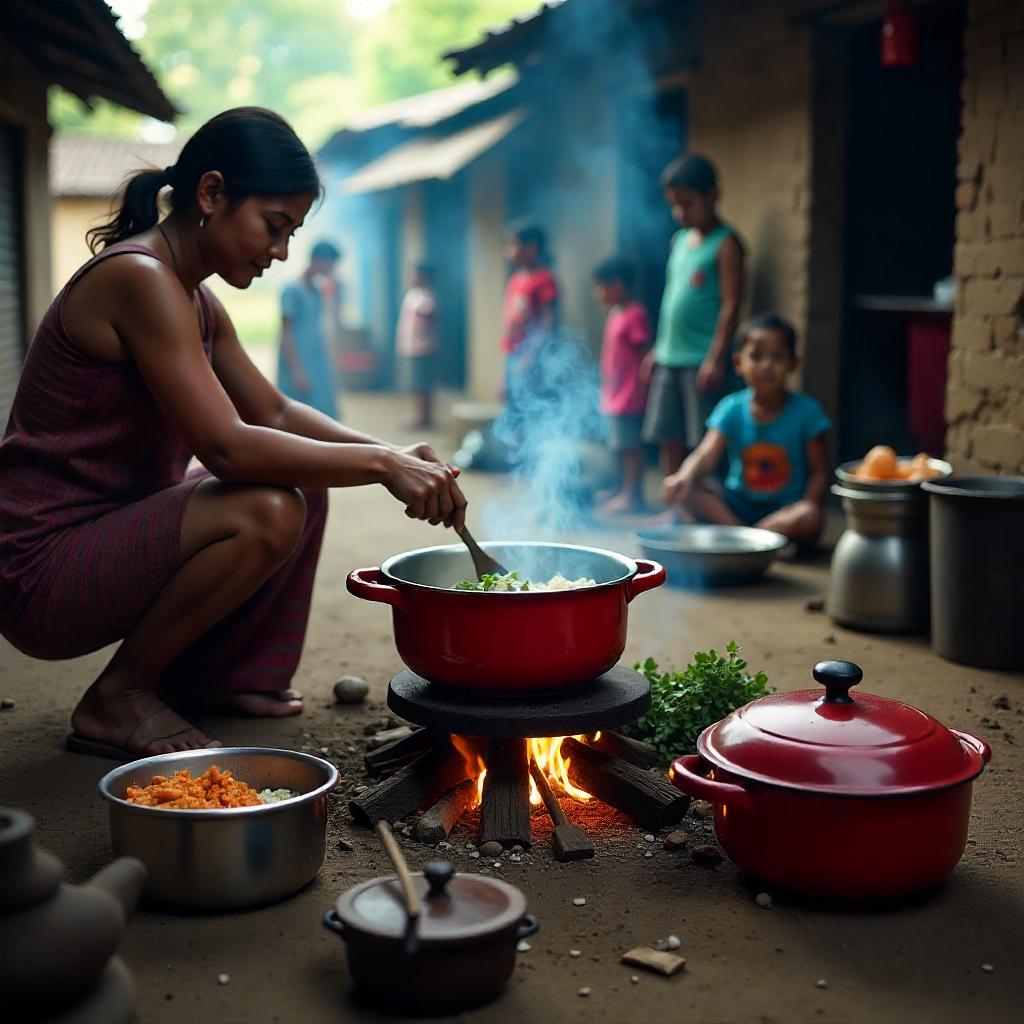Introduction of cooking pots set

Around 3.6 billion people are iron deficient out of whom two billion are anaemic [World Health Organisation (WHO), 1997]. The groups at highest risk are women of reproductive age and children under the age of 5 years in developing countries. An average it is estimated that the most significant causes which contribute towards iron deficiency are nutritional in nature. The iron status could be low in the diets and the traditional diet of developing countries generally has limited iron bioavailability (Jamison, 1993). The iron in such a diet is primarily in the nonhaem form which is less bioavailable than haem iron (Harvey et al., 2000). The consequences of iron deficiency have only been discussed above and are of tremendous public health significance for child morbidity and growth, maternal mortality, and adult productivity (Beard & Stoltzfus, 2001). The two strategies, aimed at curtailing iron deficiency, iron supplementation, and iron fortification, have withered in combating global iron deficiency because of complications of compliance, availability, finances, and logistics (Levi, 1986; WHO, 1990; Galloway & McGuire, 1994; Nestel & Alnwick, 1996) Some food preparation utensils in the kitchen may pose great risk since they are produced using materials like aluminum, stainless steel and enamel that can be dangerous or spoil food when cooked. Objective: The objective of this study was to identify the microbial and heavy metals present in leachates from certain cooking equipment that has been heated
WHY CERAMIC COOKING POTS? A CROSS-CULTURAL PERSPECTIVE

The use of ceramic cooking technology has some inherent advantages over other cooking technologies. These advantages, as identified by Arnold (1985:128– 144), include an increase in the quantity of resources in the diet, an increase in the nutritive quality that is recovered from foods, and greater efficiency in the dimension of time and labor involved in preparing meals. All these advantages are achieved due to the unique properties of ceramic containers
Subjects and study sites

The study was conducted in Nduta and Mtendeli refugee north-west Tanzania. We used a pre- and postintervention design with repeated cross-sectional surveys and inclusion of a control population. We conducted three surveys of children aged 6–59 months and their mothers. Pre-intervention survey in December 2001 and follow-up surveys at 6 months (August–September 2002) and 12 months (January 2003) after distribution of the stainless steel cooking pots. All households were provided with cooking pots set in Nduta, intervention camp. None of the household cooking pots set that were in use were replaced.
EFFECT OF CLAY

As quantified in Equation (1), thermal stress fracture toughness is a function of reducing the coefficient of thermal expansion of the clay and maximizing the thermal conductivity of the tempered material such that λ/α is the performance measure that dictates a cooking pot set. Choosing noncalcareous clays (e.g., Nile mud) with a relatively low coefficient of thermal expansion (2.0 ppm < α < 3.5 ppm; Tite et al., 1982) over calcareous clays (e.g., Mesopotamian clays of the Euphrates and Tigris flood plains; 4.5 ppm < α < 7 ppm
Population sampling

A clear sample of households for each of the three surveys was separately chosen using systematic random sampling from UNHCR computerized registration lists of all registered households in Mtendeli and Nduta camps. children under 5 years of age and their mothers were included in the survey samples. Pregnant women were not included in the anemia and Fe deficiency analysis. Households that had left the camp permanently were not replaced
Survey procedures

Pre-testing and revision of questionnaires in Kirundi, the household language of the Burundian refugees, was done by survey personnel in each camp to ensure clarity and cultural suitability. All survey staff received 3 d of training prior to the baseline survey and repetition trainings during the follow-up surveys. The anthropometric measurement and laboratory testing were augmented with extra training and standardization drills. When data collection was in progress, each survey team was supervised by a health professional from one of the collaborating agencies
Pot characteristics

Participating households were either provided with an iron or an aluminum pot. Pot allocation was by random number drawn by drawing lots. The aluminum pots were 6 liters in capacity (Near East Ltd, Blantyre, Malawi) with a flat bottom, two insulated handles, and a lid with an insulated handle. The cast iron pots were 10 liters in volume (Falkirk size 4) and weighed 12 kg. They were round at the bottom with three legs for standing, two side handles, and a lid with a handle that was not insulated . They were imported from Zimbabwe (Zimcast, Zimbabwe).
Acceptability evaluation

Participants were requested to cook their daily food using the pots. Promotion involved a cooking demonstration in every village through the use of the iron pot. Participating households were seen at 3, 6, 11, and 20 weeks post-distribution by a fieldworker who interviewed the responsible householder for cooking and completed a questionnaire. The questionnaire contained questions about acceptability and cooking characteristics. At 11 and 20 weeks of use of pots, further information was sought (Tables 2 and 3, below). The frequency of oil use in the villages was assessed after 11 weeks of pot use since this could be a factor that will influence the prevalence of rusting in iron pots.
A COMPARISON OF DIRECT VERSUS INDIRECT COOKING

Two sets of experiments were run in order to determine if the stone-boiling process takes more fuel than the direct fire-boiling process. Equipment employed in these trials are the following: (1) waterproofed basket, (2) replicas of Arctic-style cooking jars, and (3) replicas of prehistoric Southwestern U.S.-style cooking jars
Methods of cooking pots set

Trials were solicited by searching MEDLINE (1966 to May 2002) and EMBASE (1988 to May 2002) with the search strategy developed by the Cochrane Collaboration adapted for use in PubMed (Dicersin et al., 1994). The optimal search strategy was combined with the keywords pot* or iron uten* the search proceeded with or iron def*. In MEDLINE related Selection Randomized control trials in which participants ate food cooked in cast iron pots compared to participants whose food was prepared in non-cast iron pots were considered age was kept constant at 4 months to ensure that only those individuals whose food was eaten in adequate amounts were included.Outcome measures were the difference in hemoglobin level and the proportion of individuals using iron pots on a daily basis
Representative Collection

Two of the chosen stain-less steel enamel pots were obtained from various residential districts of Port Harcourt. The water samples employed in the work were obtained from various areas like Trans-Amadi, Etche, and Mile IV in Rivers State. Trans –Amadi water sample acted as a control because it is always treated prior to use. Old and new aluminum pots, electric stoves, stop-watch, distilled water, and other water samples were randomly taken and transported to the experiment room. Articles to selected studies were also analyzed.
Conclusion of cooking pots set

The studies in the present review are all subject to some methodological flaws which provide difficulties in arriving at a satisfying conclusion. Even so, the introduction of iron pots or enhancing the utilization of communities in developing countries for the preparation of food could be a promising innovative interposition for reducing iron deficiency and iron deficiency anemia in communities where these

